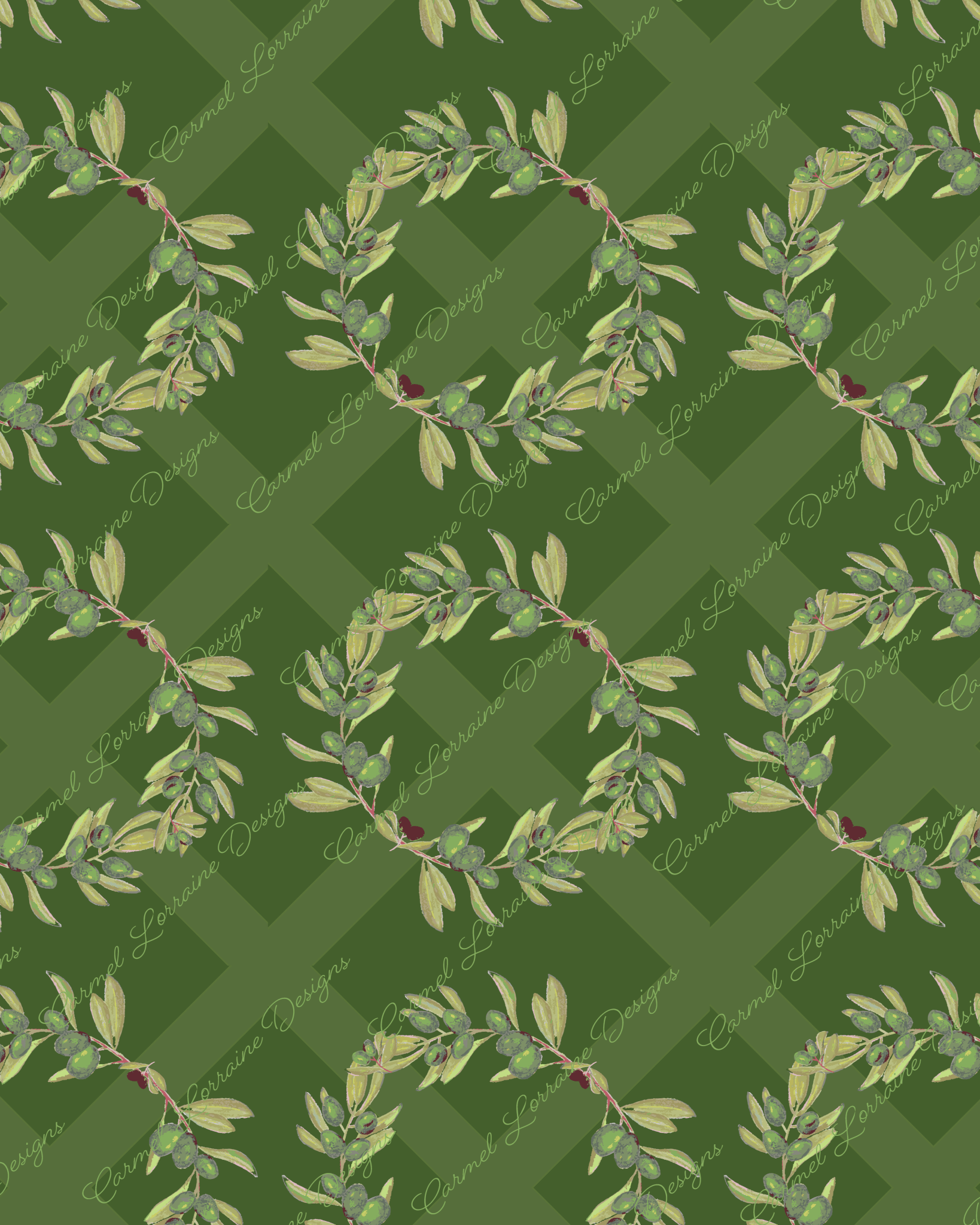Analogue vs. Digital Art: Unique Beauty for Home Decor and Everyday Products
As a Surface Pattern Designer, one of the most exciting parts of creating art is picking the right medium. Both analogue and digital art have unique strengths. They shine in different ways, enhancing home decor and functional products. Whether it’s the organic textures of analogue or the precision of digital, both add something special to your space.
In this post, I’ll explore both art forms. I’ll explain how each brings distinct beauty to home decor and functional items. Plus, I’ll share tips on choosing the right medium for your projects.
What Is Analogue Art?
Analogue art is rooted in traditional techniques, using tools like pencils, watercolors, and acrylic paints. It involves hands-on craftsmanship, where each stroke, shade, and detail is created on physical materials like paper or canvas.
The Process for Making a Pattern:
- Creating the Motif: Artists use traditional tools to create motifs. Olive branches may be painted with watercolors. Herb patterns might be sketched with pencil and ink. My oil pastel creations, for example, combine traditional techniques with the crispness of digital design.
- Designing a Seamless Pattern: Using digital tools, motifs are arranged into a repeating pattern. The design flows beautifully when applied to textiles or other surfaces. This blend of traditional and digital techniques combines the charm of handmade art with modern applications.
What Is Digital Art?
Digital art skips the physical canvas and starts on a digital platform. Artists use drawing tablets or apps like Procreate for flexibility and precision.
The Process for Making a Pattern:
- Drawing Digitally: Artists create motifs using a stylus and digital device. Procreate mimics traditional tools but adds flexibility. You can undo strokes, layer elements, and experiment with colors.
- Building a Seamless Pattern: Like with analogue art, digital motifs are arranged into a repeating design. Digital tools make it easy to resize, rotate, or adjust motifs.
Digital art offers vibrant, precise designs. It’s perfect for modern products like mugs, drink bottles, or wallpaper.
The Strengths of Analogue Art in Home Decor
Analogue art’s handmade touch adds character and warmth to your space.
- Organic Textures and Depth: Traditional methods add a tactile quality. Visible brushstrokes and natural tone variations create depth. On fabrics like cushions or throws, these textures offer a sense of richness and timeless elegance.
- Timeless and Authentic: Analogue art complements classic decor. Nature-inspired designs like olive branches add warmth to rustic or farmhouse styles.
- Perfect for Textiles and Wall Art: Analogue designs work well on soft materials like linen or canvas. They make cozy cushions, elegant table settings, or statement wall art.
The Brilliance of Digital Art in Everyday Products
Digital art’s precision and versatility make it ideal for modern products.
- Bold, Crisp, and Vibrant: Digital tools create seamless, colorful patterns. The polished look ensures designs stand out on mugs, drink bottles, and tech accessories.
- Versatility Across Formats: A digital design can be adapted to many products. For example, a geometric lattice from my olive collection could be on drink bottles, notebooks, and tote bags.
- Durable and Practical: Digital designs work well on durable materials. They’re both functional and visually appealing.
Balancing Patterns in Your Space: Minimalist vs. Maximalist
Here’s how to add patterns to your space:
- For Minimalists: Choose subtle patterns, like olive branches. Use them on key items to add texture without disrupting a neutral palette.
- For Maximalists: Layer bold patterns across surfaces. A set of patterned napkins with a striking tablecloth can create a dynamic look.
Choosing the Right Medium: A Designer’s Perspective
The choice between analogue and digital art depends on the product and the story I want to tell.
- Material and Purpose: Analogue designs complement natural materials like linen or wood. Digital designs suit sleek, functional products like mugs or drink bottles.
- Style and Aesthetic: Analogue art adds warmth to vintage or rustic themes. Digital art brings vibrancy to bold, modern collections.
- Customer Experience: Analogue-inspired patterns create a cozy atmosphere. Digital designs bring energy to everyday products.
Conclusion: Celebrating Both Worlds
Both analogue and digital art offer unique beauty for your space. From hand-painted olive motifs to digital designs on travel mugs, each medium adds its own quality to your life.
I love blending both approaches. Whether it’s the warmth of analogue patterns or the crispness of digital designs, each has a place in your home and daily products
Explore my collection at www.carmellorrainedesigns.com.au to find pieces that reflect both worlds.
Pictured: Olive Diamonds Pattern
This design blends hand-painted olive wreaths with a modern digital touch. The soft greens, greys, and purples create a natural feel, while the olive diamond check adds a crisp, modern touch. It’s the perfect harmony of traditional and digital artistry, adding warmth and sophistication to any space.
While this design isn’t yet available as a printed product, it’s available for licensing. I’m excited to share it and hope it finds a new home soon!
